Pattern recognition enhancement
Pattern recognition enhancement is defined as an increase in a person's ability and tendency to recognize patterns within vague stimuli.
Seeing patterns resemble human faces is an innate ability which humans possess in everyday life and is well documented in scientific literature under the term pareidolia.[1][2] Common examples of this include spotting faces in the front of a car, or seeing different objects in clouds.[3]
During this effect, patterns can be significantly more pronounced than it would usually be during a sober state.[4][5] For example, remarkably detailed images may appear embedded in scenery, everyday objects may look like faces, and clouds may appear as fantastical objects all without any visual alterations taking place. Once an image has been perceived within an object or landscape, the mind may further exaggerate this recognition through the hallucinatory effect known as transformations, which goes beyond pareidolia and becomes a standard visual hallucination.
Pattern recognition enhancement is often accompanied by other coinciding effects such as visual acuity enhancement and colour enhancement.[6][7] It is most commonly induced under the influence of mild dosages of psychedelic compounds, such as LSD, psilocybin, and mescaline.
Image examples
| Caption | |
|---|---|
 | Face within tree bark by Bev Doolittle |
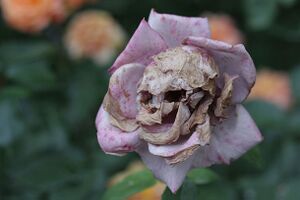 | Skullflower by Anonymous |
 | Face in a cloud by Neil Usher |
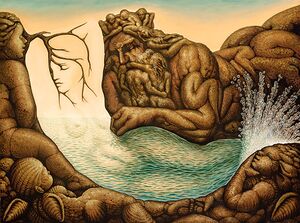 | Absents of the mermaid by Octavio Ocampo |
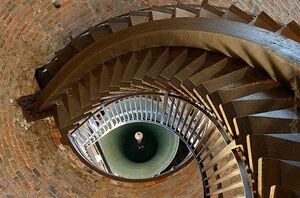 | Eye of the tower by Davide Lombardi |
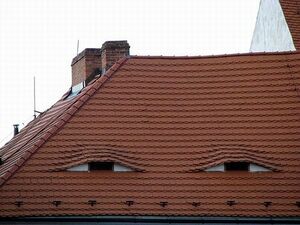 | Squinting eyes on a roof top by Anonymous |
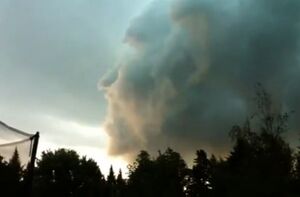 | Face within a cloud by Denis Farmer |
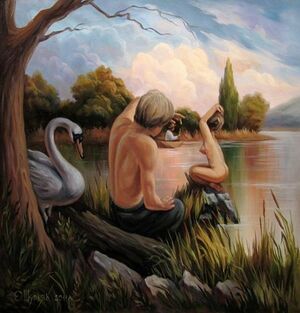 | Optical illusion by Oleg Shuplyak |
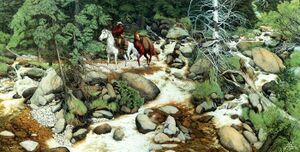 | The Forest Has Eyes by Bev Doolittle |
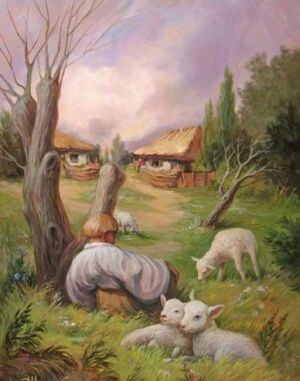 | Optical illusion by Oleg Shuplyak |
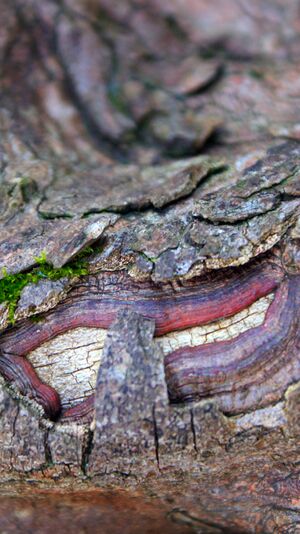 | Smile in tree bark by Chelsea Morgan |
Psychoactive substances
Compounds within our psychoactive substance index which may cause this effect include:
- 1B-LSD
- 1P-ETH-LAD
- 1P-LSD
- 1V-LSD
- 1cP-AL-LAD
- 1cP-LSD
- 1cP-MiPLA
- 25B-NBOH
- 25B-NBOMe
- 25C-NBOH
- 25C-NBOMe
- 25D-NBOMe
- 25E-NBOH
- 25I-NBOH
- 25I-NBOMe
- 25N-NBOMe
- 2C-B
- 2C-B-FLY
- 2C-C
- 2C-D
- 2C-E
- 2C-I
- 2C-P
- 2C-T
- 2C-T-2
- 2C-T-21
- 2C-T-7
- 3-MMC
- 3C-E
- 3C-P
- 4-AcO-DET
- 4-AcO-DMT
- 4-AcO-MET
- 4-AcO-MiPT
- 4-FA
- 4-HO-DET
- 4-HO-DPT
- 4-HO-DiPT
- 4-HO-EPT
- 4-HO-MET
- 4-HO-MPT
- 4-HO-MiPT
- 5-MeO-DALT
- 5-MeO-DiBF
- 5-MeO-DiPT
- 5-MeO-MiPT
- 6-APB
- 6-APDB
- AL-LAD
- ALD-52
Experience reports
Anecdotal reports which describe this effect within our experience index include:
- Experience: 15mg 2C-B (oral) - A pleasant low-dose evening with Nexus
- Experience: 200µg 1P-LSD (sublingual) + 12mg CBD - The Vortex of Empathy
- Experience: 22mg 2C-B (oral) / 100ug 1P-LSD (sublingual) - My first time tripping alone (2 days in a row)
- Experience: 25mg 2C-E (oral) - A mindblowing experience
- Experience: 80mg EPT - Slight improvement
- Experience:0.75g MDMA - Possibly some MDA through metabolisation?
- Experience:1000 Morning Glory seeds - Rediscovering the Self
- Experience:120µg LSD - First Bad Acid Trip, Psychosis
- Experience:150mg MDMA + 20mg 2C-B - I designed it this way myself
- Experience:2.5g Psilocybe Cubensis B+ strain - epiphany of nondualistic reality
- Experience:20mg (insufflated) - permanent all-encompassing states of unity and interconnectedness
- Experience:20mg - I looked up and saw an angry god-like figure made of clouds glaring down at me
- Experience:250 seeds - Harsh body load
- Experience:25mg - A labyrinth of organs and a storybook walk
- Experience:2C-P (approx. 35mg) - Asymmetrical Terror and the Geometric Sea
- Experience:2mg 25C-NBOMe - Experimental trip to test personal limits of NBOMes
- Experience:3 Grams of Mushrooms - Reset on my Life, Experiencing Satori and the Cosmic Perspective
- Experience:3.5g psilocybe cubensis - Relinquishing of Material Chains/Fear and Desolation
- Experience:300µg LSD - Togetherness and the Silent Dusk
- Experience:4-HO-DET (20 mg, oral) - Tripping for my birthday
- Experience:4.5g - The Grand Introduction to Beauty and Fear
- Experience:40mg - Brothermind and the Forest's Hand
- Experience:5g Mushrooms - Failed attempt at a Terence Mckenna style trip.
- Experience:BK-2C-B - Various experiences
- Experience:LSD (230 ug) - An amazing adventure by vikilikepsych
- Experience:Mushrooms and Snuff Films -- Trip Report (3.5 grams)
- Experience:Unknown dosage / 1 tab DOC - Psychedelia Turned Into Stimulant Psychosis
- Experience:Unknown dosage / 3 tabs - Ego death and a total break through in the snow
- Experience:~150mg MDA(oral) - a case of mistaken identity
See also
- Responsible use
- Subjective effects index
- Pattern recognition suppression
- Psychedelics - Subjective effects
- Dissociatives - Subjective effects
- Deliriants - Subjective effects
External links
References
- ↑ Liu, Jiangang; Li, Jun; Feng, Lu; Li, Ling; Tian, Jie; Lee, Kang (2014). "Seeing Jesus in toast: Neural and behavioral correlates of face pareidolia". Cortex. 53: 60–77. doi:10.1016/j.cortex.2014.01.013. ISSN 0010-9452.
- ↑ Hadjikhani, Nouchine; Kato, Masaharu; Mugitani, Ryoko (2015). "Pareidolia in Infants". PLOS ONE. 10 (2): e0118539. doi:10.1371/journal.pone.0118539. ISSN 1932-6203.
- ↑ Abraham, Henry David (1983). "Visual Phenomenology of the LSD Flashback". Archives of General Psychiatry. 40 (8): 884. doi:10.1001/archpsyc.1983.01790070074009. ISSN 0003-990X.
- ↑ Belser, Alexander B.; Agin-Liebes, Gabrielle; Swift, T. Cody; Terrana, Sara; Devenot, Neşe; Friedman, Harris L.; Guss, Jeffrey; Bossis, Anthony; Ross, Stephen (2017). "Patient Experiences of Psilocybin-Assisted Psychotherapy: An Interpretative Phenomenological Analysis". Journal of Humanistic Psychology. 57 (4): 354–388. doi:10.1177/0022167817706884. ISSN 0022-1678.
- ↑ Halberstadt, Adam L. (2015). "Recent advances in the neuropsychopharmacology of serotonergic hallucinogens". Behavioural Brain Research. 277: 99–120. doi:10.1016/j.bbr.2014.07.016. ISSN 0166-4328.
- ↑ Papoutsis, Ioannis; Nikolaou, Panagiota; Stefanidou, Maria; Spiliopoulou, Chara; Athanaselis, Sotiris (2014). "25B-NBOMe and its precursor 2C-B: modern trends and hidden dangers". Forensic Toxicology. 33 (1): 1–11. doi:10.1007/s11419-014-0242-9. ISSN 1860-8965.
- ↑ Bersani, Francesco Saverio; Corazza, Ornella; Albano, Gabriella; Valeriani, Giuseppe; Santacroce, Rita; Bolzan Mariotti Posocco, Flaminia; Cinosi, Eduardo; Simonato, Pierluigi; Martinotti, Giovanni; Bersani, Giuseppe; Schifano, Fabrizio (2014). "25C-NBOMe: Preliminary Data on Pharmacology, Psychoactive Effects, and Toxicity of a New Potent and Dangerous Hallucinogenic Drug". BioMed Research International. 2014: 1–6. doi:10.1155/2014/734749. ISSN 2314-6133.